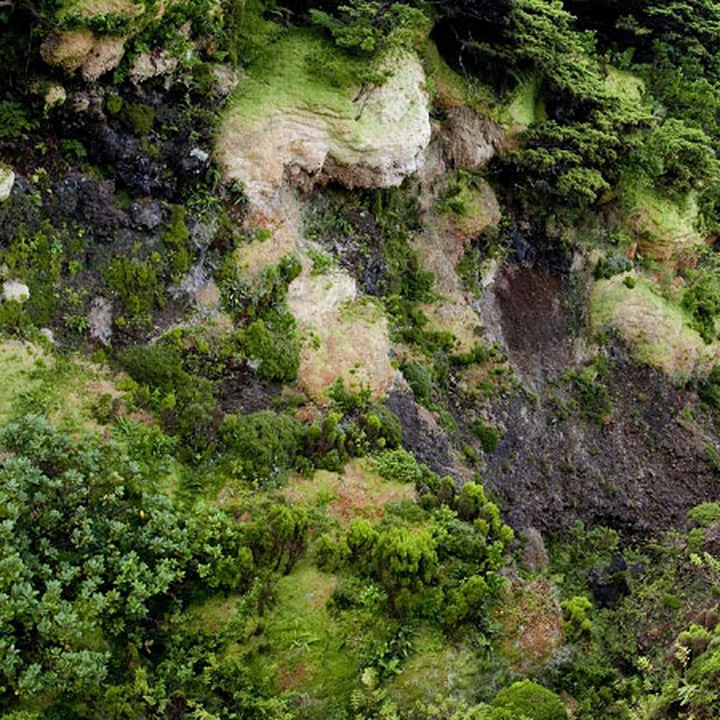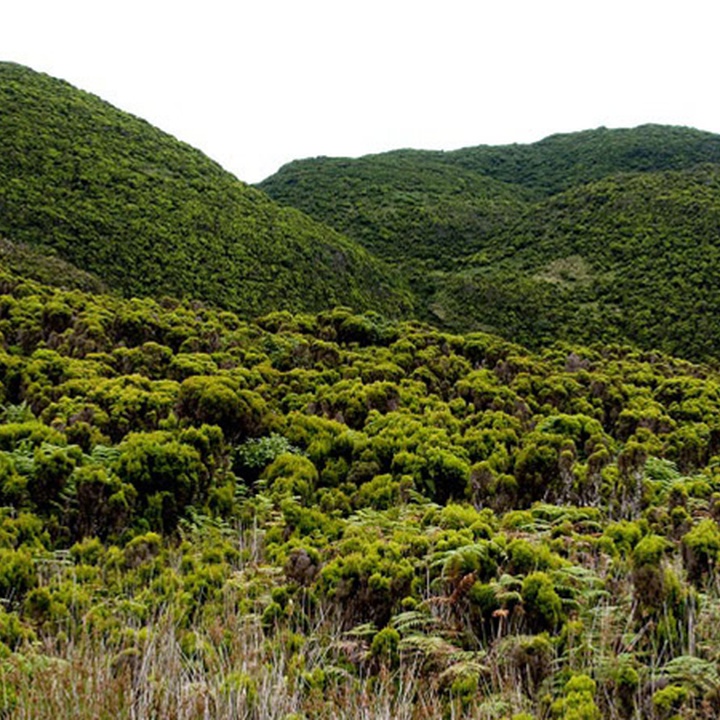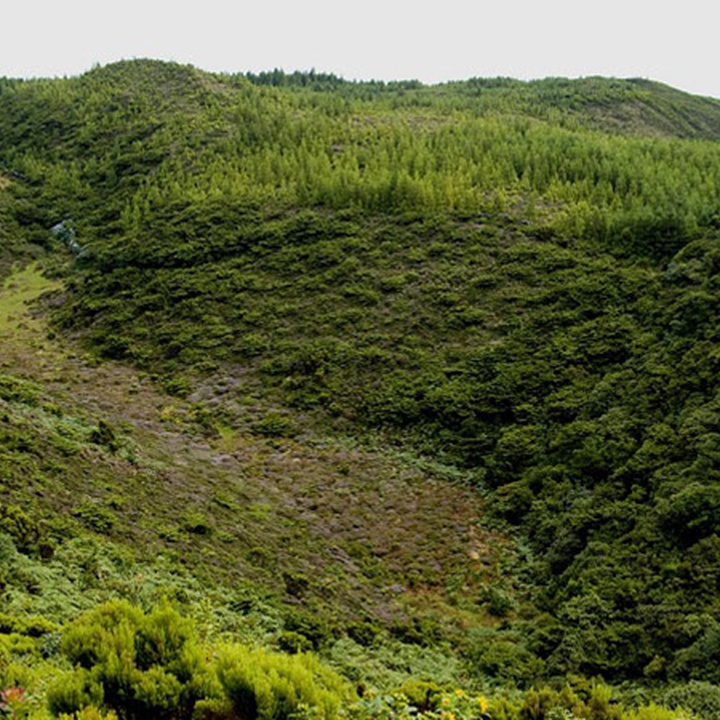Text size:
Terra Brava e Criação das Lagoas
Nature Reserve
Located in the central region of the island, this area occupies about 369 hectares and has a maximum altitude of 726 metres.
Terra Brava belongs to the Pico Alto Volcano, the most recent central volcano of the island, with about 100 thousand years. It is a morphologically irregular area, consisting of a set of domes and very thick siliceous lava flows, named coulées, with an extensive pumice covering.
The steep slopes, the zones of irregular relief and of difficult access and the several movement cracks that exist in these domes and coulées of trachytic nature display communities of well-preserved native flora, where the anthropic action is not expressive.
In this area, one can find well-preserved communities of natural flora, such as forests of Juniperus-Laurus and bog woodlands. The three main species are the Short Leafed Juniper (Juniperus brevifolia), the Azorean Laurel (Laurus azorica) and the Azorean Holly (Ilex azorica), but it is also possible to observe other endemic species such as the Azorean Picconia (Picconia azorica), the Azorean Cherry (Prunus azorica), the Azorean Loosestrife (Lysimachia azorica) and the Azorean Sanicle (Sanicula azorica).
Birds are also easily observed in this reserve, namely the Woodcock (Scolopax rusticola), the Common Snipe (Gallinago gallinago), the Azores Blackbird (Turdus merula azorensis), the Azores Chaffinch (Fringilla moreletti), the Goldcrest (Regulus regulus inermis) and the Common Buzzard (Buteo buteo rothschildi).
This area integrates the Serra de Santa Bárbara e Pico Alto Special Area of Conservation (SAC) within the Natura 2000 network and a Ramsar Site under the Ramsar Convention.






